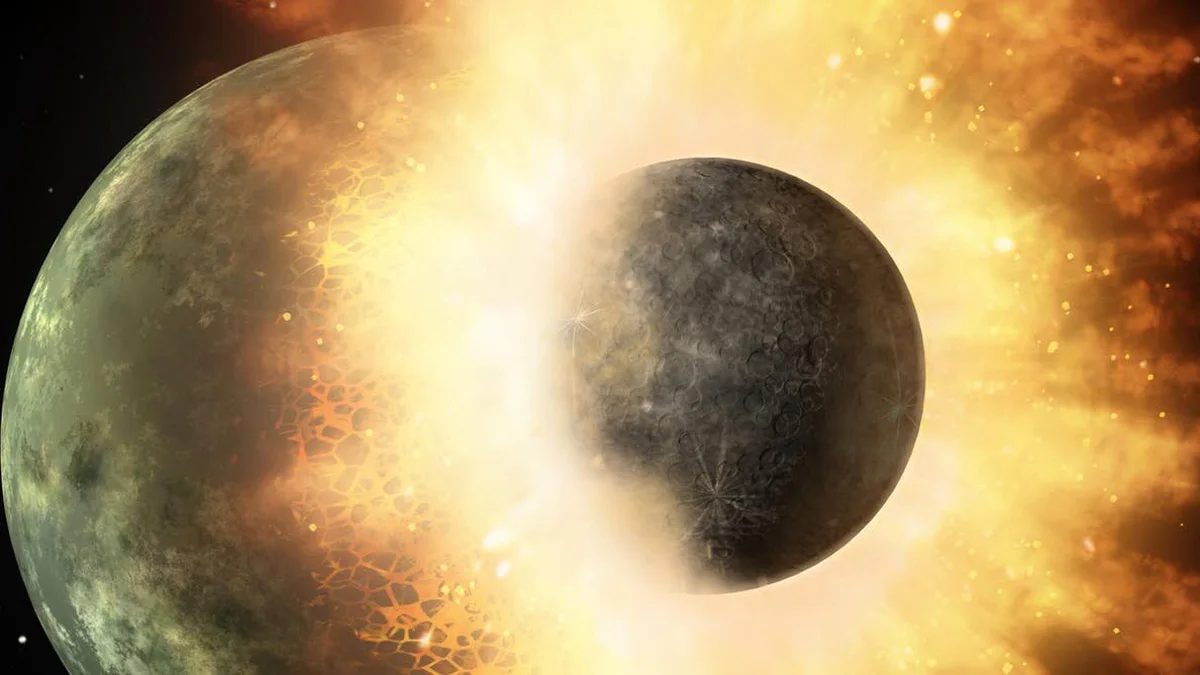
Is an intact piece of protoplanet Theia locked away inside the Moon?
New research may solve a persistent mystery about how Earth's Moon formed.
New clues to the origin of the Moon surfaced this week, which reveal that the Earth and Moon are not as similar as previously thought, and part of the protoplanet that helped create the Moon may still be preserved deep under the lunar surface.
The current theory of how Earth and Moon came to be, as we know them today, is called the Giant-Impact Hypothesis. Essentially, billions of years ago, proto-Earth was all alone as it circled the Sun, until a fateful collision with a Mars-sized protoplanet scientists named Theia. The cataclysmic impact blasted both planets apart, and while much of Theia mixed together with proto-Earth, a cloud of debris that was blasted out into space eventually coalesced and cooled to form the Moon.
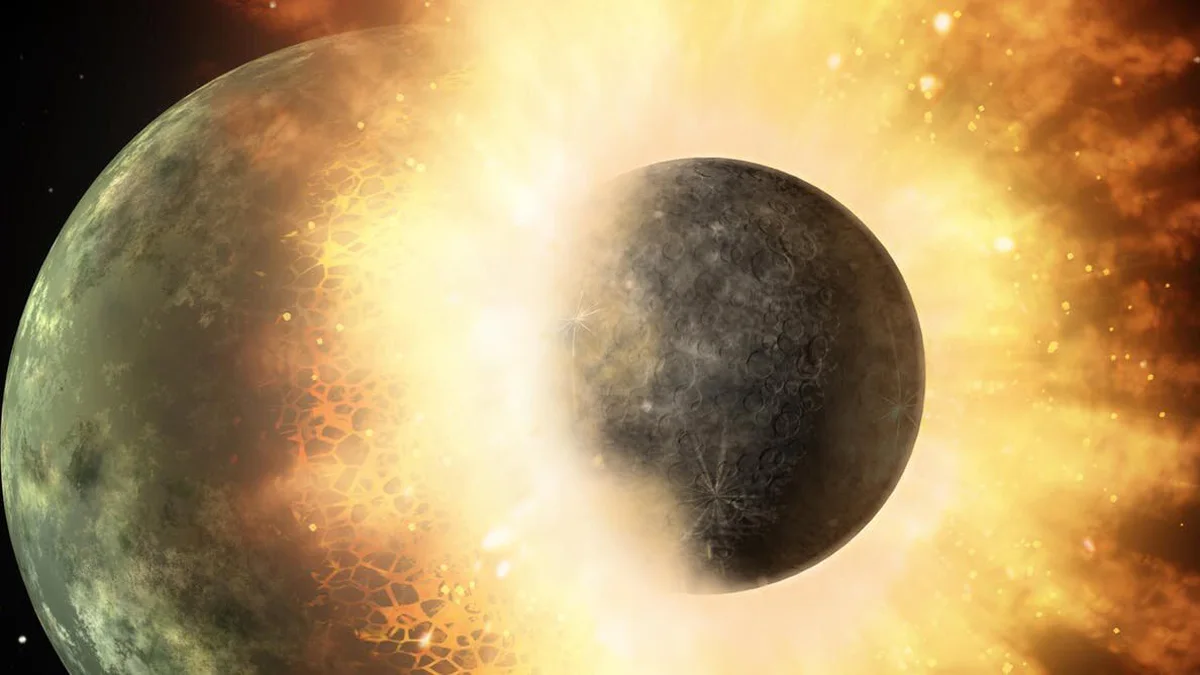
Earth and Theia collide in this artist's impression. Credit: NASA/JPL-Caltech
After the Apollo astronauts brought back samples from the Moon, scientists examining those rocks found something fairly remarkable. The types and amounts of minerals, as well as the types of atoms locked up in the structures of those minerals, were nearly identical to what they found in rocks here on Earth.
That fact pointed to a common origin for both Earth and the Moon - that is, they formed together, rather than the Moon being an object that simply got captured by Earth's gravity. According to researchers at the University of New Mexico's Center for Stable Isotopes, however, this similarity does not actually make sense.
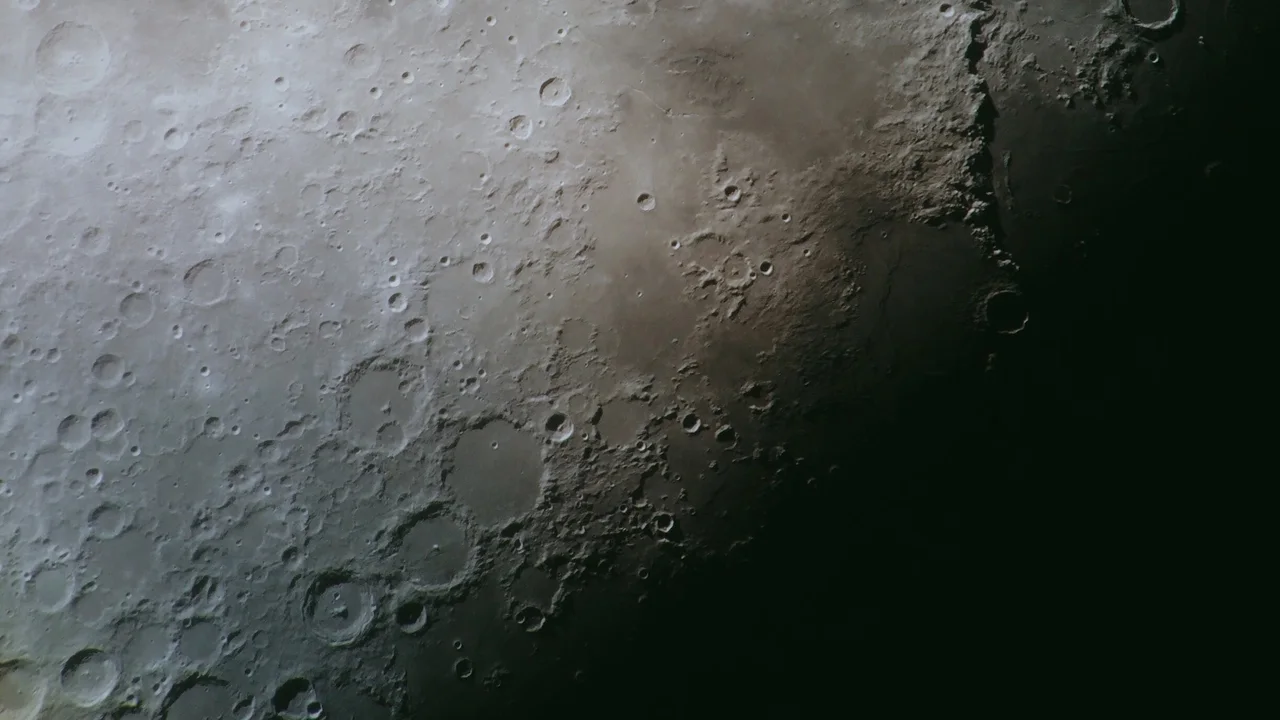
This view of the Moon's surface reveals the variety of terrain, and thus mineral composition. Credit: UNM Newsroom
One of the main ideas from the Giant-Impact Hypothesis is that for the impact of Earth and Theia to produce the Moon, the Moon has to be mostly made up of parts of Theia, which would have been sheared off during the collision. So, for Earth and Moon minerals to be nearly identical, according to UNM research scientists Erick Cano, Zach Sharp and Charles Shearer, one of two things needs to be true: 1) either Theia and Earth had to have the exact same oxygen isotope composition, or 2) the impact between the two protoplanets had to result in a very thorough mixing of the two planets.
Based on their research, neither of these options is very likely, though. To have the exact same composition, Earth and Theia would have had to form at the same distance from the Sun (highly unlikely), and simulations have shown that achieving a thoroughly-mixed combination of Earth and Theia in the Moon would have been very difficult.
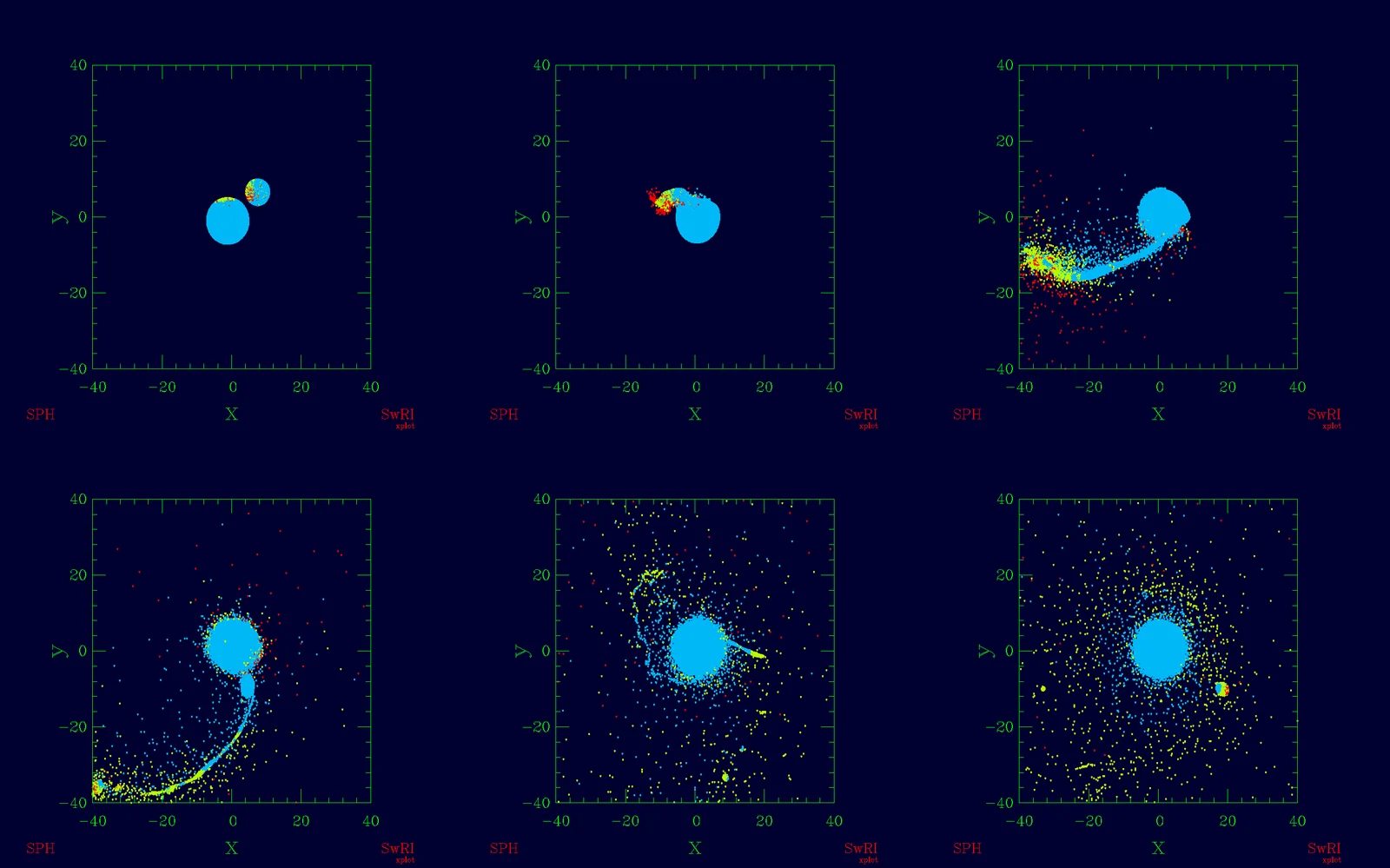
This simulation shows different stages of the Earth-Theia collision. The “red” particles were found to escape the Earth-Moon system. Some of this debris may eventually go on to strike other solar system bodies like large main belt asteroids. “Yellow-green” particles go into the disk that makes the Moon. “Blue” particles were accreted by the proto-Earth. Credit: Robin Canup/Southwest Research Institute/NASA
In a new study published in Nature Geoscience this week, Cano and his colleagues performed a detailed examination of samples from the Apollo missions, and they revealed one important difference between Earth rocks and Moon rocks.
When samples that originated on the Moon's surface were compared with Earth rocks, they were found to have the same abundance of oxygen isotopes locked up in the minerals' crystal structure. 'Isotopes' are atoms of a particular element that have the same number of protons in their nuclei, but a different number of neutrons. The most common isotope of oxygen is oxygen-16, with 8 protons & 8 neutrons in the nucleus. The isotope this research focused on was oxygen-17 (8 protons & 9 neutrons).
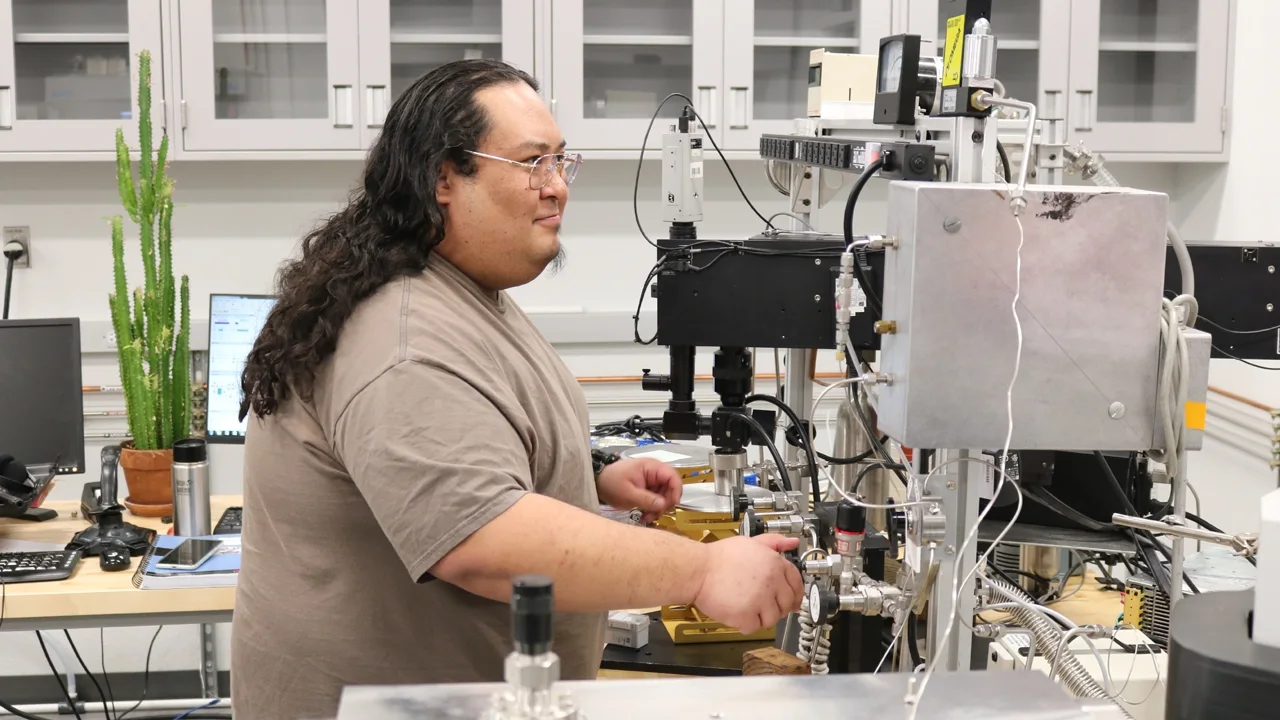
Researcher Erick Cano at the University of New Mexico's Center for Stable Isotopes. Credit: Steve Carr
As the researchers examined samples that came from under the Moon's surface, though - those from inside craters or that have been identified as ejecta from meteoroid impacts, or basalt that was once magma that flowed to the surface from deep down - a pattern formed. The deeper down the rocks were from, the more the oxygen isotopes in the minerals differed from those found on Earth.
Thus, the deeper they went, it looked like they were seeing less and less of Earth, and more and more of a different astronomical body. Could it be Theia?
"Our findings suggest that the deep lunar mantle may have experienced the least mixing and is most representative of the impactor Theia," Cano said in a University of New Mexico press release.
It could be that when proto-Earth and Theia smashed into one another, a relatively intact piece of Theia sheared off. Orbiting around the new Earth, this chunk of Theia would have been surrounded by a cloud of vapour and dust that matched the well-mixed composition of the resulting planet. As everything cooled, that vapour and dust would have then settled onto the surface of the chunk of Theia, and the Moon - now - could be comprised of a relatively Theia-like core, with a surface composed of minerals that are more like the combination of proto-Earth and Theia we see here.

This diagram shows what the interior structure of the Moon looks like, with various surface features labelled. Credit: Kelvinsong/Wikimedia Commons (CC BY-SA 4.0)
According to the researchers, this study will allow researchers to focus more on the less complicated model simulations of the Theia collision, while at the same time, giving us a better idea of what Theia was like and where it originated before the impact.
"Based on the results from our isotopic analysis, Theia would have an origin farther out from the Sun relative to Earth and shows that Theia's distinct oxygen isotope composition was not completely lost through homogenization during the giant impact," Sharp said in the UNM press release.






